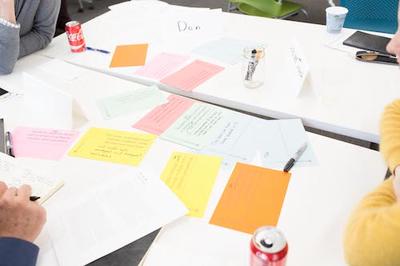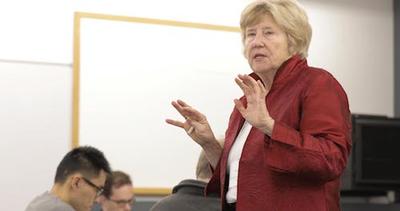At professional schools (like Harvard’s Law, Business, Education, or Medical Schools), courses often adopt the so-called "case method" of teaching, in which students are confronted with real-world problems or scenarios involving multiple stakeholders and competing priorities. Most of the cases which faculty use with their students are written by professionals who have expertise in researching and writing in that genre, and for good reason—writing a truly masterful case, one which can engage students in hours of debate and deliberation, takes a lot of time and effort. It can be effective, nevertheless, for you to try implementing some aspects of the case-teaching approach in your class. Among the benefits which accrue to using case studies are the following:
- the fact that it gives your students the opportunity to "practice" a real-world application;
- the fact that it compels them (and you!) to reconstruct all of the divergent and convergent perspectives which different parties might bring to the scenario;
- the fact that it motivates your students to anticipate a wide range of possible responses which a reader might have; and
- the fact that it invites your students to indulge in metacognition as they revisit the process by which they became more knowledgeable about the scenario.
Features of an Effective Teaching Case
 In Spring 2017 the Bok Center hosted an Exploratory Seminar convening faculty from a number of Harvard's professional schools and the Faculty of Arts and Sciences to discuss the different approaches to teaching with cases. Over the course of the day, the group developed a list of some features which are common to effective cases.
In Spring 2017 the Bok Center hosted an Exploratory Seminar convening faculty from a number of Harvard's professional schools and the Faculty of Arts and Sciences to discuss the different approaches to teaching with cases. Over the course of the day, the group developed a list of some features which are common to effective cases.
While no two case studies will be exactly alike, here are some of those principles:
- The case should illustrate what happens when a concept from the course could be, or has been, applied in the real world. Depending on the course, a “concept” might mean any one among a range of things, including an abstract principle, a theory, a tension, an issue, a method, an approach, or simply a way of thinking characteristic of an academic field. Whichever you choose, you should make sure to “ground” the case in a realistic setting early in the narrative, so that participants understand their role in the scenario.
- The case materials should include enough factual content and context to allow students to explore multiple perspectives. In order for participants to feel that they are encountering a real-world application of the course material, and that they have some freedom and agency in terms of how they interpret it, they need to be able to see the issue or problem from more than one perspective. Moreover, those perspectives need to seem genuine, and to be sketched in enough detail to seem complex. (In fact, it’s not a bad idea to include some “extraneous” information about the stakeholders involved in the case, so that students have to filter out things that seem relevant or irrelevant to them.) Otherwise, participants may fall back on picking obvious “winners” and “losers” rather than seeking creative, negotiated solutions that satisfy multiple stakeholders.
- The case materials should confront participants with a range of realistic constraints, hard choices, and authentic outcomes. If the case presumes that participants will all become omniscient, enjoy limitless resources, and succeed, they won’t learn as much about themselves as team-members and decision-makers as if they are forced to confront limitations, to make tough decisions about priorities, and to be prepared for unexpected results. These constraints and outcomes can be things which have been documented in real life, but they can also be things which the participants themselves surface in their deliberations.
-
Participants should be able to analyze the case, identify possible responses, commit to one, and articulate the rationale behind their decision. It is always tempting when encountering a case to jump right to a proposed solution: “Here’s how I would allocate scarce funding in this school district…” Yet there is a real danger in this that participants will “misdiagnose” the true problem—the true choices— which stand before them. It is important, therefore, that participants be asked to start simply by determining what decisions really can or should be made, and then proceed to
 prioritize which objectives seem most important. It is also important that participants not be incentivized, however subtly, to stick too firmly with their initial position: one of the best things about case teaching is that it allows participants to acknowledge mistakes or oversights and to try on alternative solutions in a way that is not quite possible in the real world.
prioritize which objectives seem most important. It is also important that participants not be incentivized, however subtly, to stick too firmly with their initial position: one of the best things about case teaching is that it allows participants to acknowledge mistakes or oversights and to try on alternative solutions in a way that is not quite possible in the real world.
- The activity should include space to reflect upon the decision-making process and the lessons of the case. Writing a case offers an opportunity to engage in multiple layers of reflection. For you, as the case writer, it is an occasion to anticipate how you (if you were the instructor) might create scenarios that are aligned with, and likely to meet the learning objectives of, a given unit of your course. For the participants whom you imagine using your case down the road, the case ideally should help them (1) to understand their own hidden assumptions, priorities, values, and biases better; and (2) to close the gap between their classroom learning and its potential real-world applications.
